首先要提的是启动页面。
它往往是一家公司给人的第一印象:是对企业的数字化介绍,包括其要解决的问题以及提供的解决方案。启动页面的复杂程度各不相同。有些公司将首页用作启动页面。另一些公司则会创建特定页面,针对不同的客户群体,引导他们进入营销漏斗。
启动页面的形式也会因公司的发展阶段而异。但我发现一个常见误区:启动页面更注重初创公司自身的故事,而非客户与初创公司合作的历程。
客户越能在启动页面文案中看到自己的影子,文案效果就越好。不妨从以下三个要素入手,重新思考并修改您的启动页面。如果觉得这样太费力,想快速优化,以下建议将有助于改进您当前的启动页面文案。
启动页面文案快速优化技巧
聚焦客户视角。 启动页面文案常出现“我们提供”或“我们的解决方案”这类表述,它们关注的重点有误——聚焦于公司自身,而非客户。应逐句检查文案,重新撰写以面向客户。一种方法是用“您”开头,另一种技巧是用动词开头。聚焦客户视角,几乎能确保文案能触达访客,并与他们产生共鸣。Modern Fertility 的文案就是很好的范例:
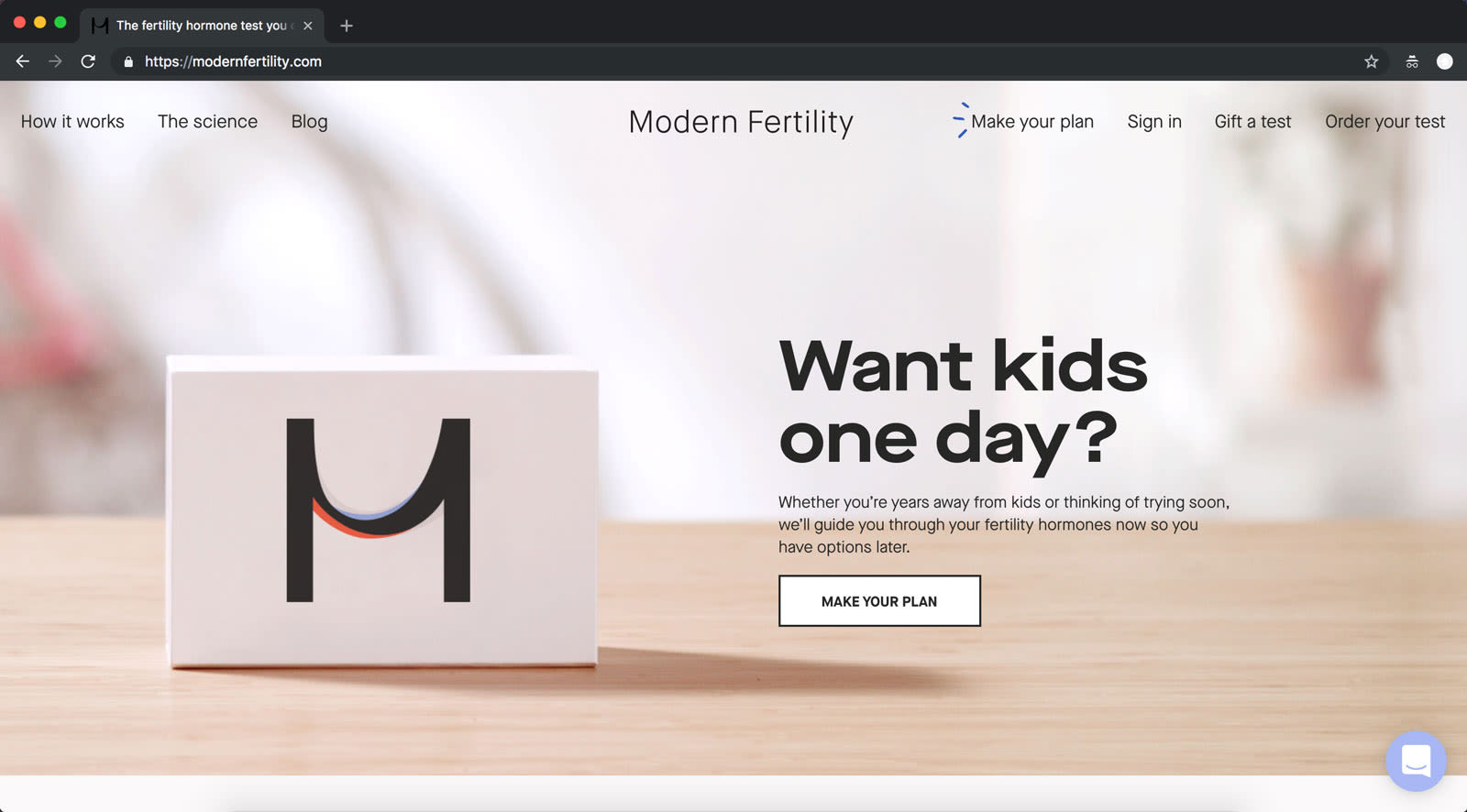
文案以“您”开头的唯一例外情况,可能是服务型企业。这类企业的潜在客户希望了解服务提供者的独特之处,而这种独特性往往会通过“我们”的表述来体现。但并非必须如此,只是实际中大多采用这种方式。
为文案段落增添结构、层次与亮点。 即便文案内容准确、简洁且语法正确,仍可能显得平淡。通过结构、层次与亮点的设计,可让文案更具吸引力和记忆点。具体方法如下:
为句子设计固定结构。 可巧妙结合品牌 logo 设计句式,或围绕主题构建表达模式。以一家通过铁路运输货物的物流公司为例,其不仅希望传递信息,还可能想用横向均匀排列的圆点模拟火车行驶的视觉效果。为契合这一视觉设计,可将启动页面文案改写为仅使用相同长度(如 3 个或 4 个字母)的单词串联而成的句子。
通过调整句子长度和格式营造层次。 层次能让文案更具对话感、更自然且更有吸引力。具体做法是:先写一句流畅精炼的长句,再搭配一句更简洁明快的短句;多加入一些短句,一句接一句,再插入一句包含多个从句、能引导读者深入阅读的长句,最后戛然而止。这样就能营造出丰富的层次。
加入一两个亮眼词汇增添亮点。 优化文案可从替换词汇入手:找出文案中平淡的词汇,替换为更生动的同义词。以 Collective Retreats 的启动页面文案为例,将“在不失去奢华体验的前提下寻找目的地“改为“探索非凡目的地,无需牺牲奢华体验”。鲜活的形容词和更有力的动词能让文案更具冲击力。
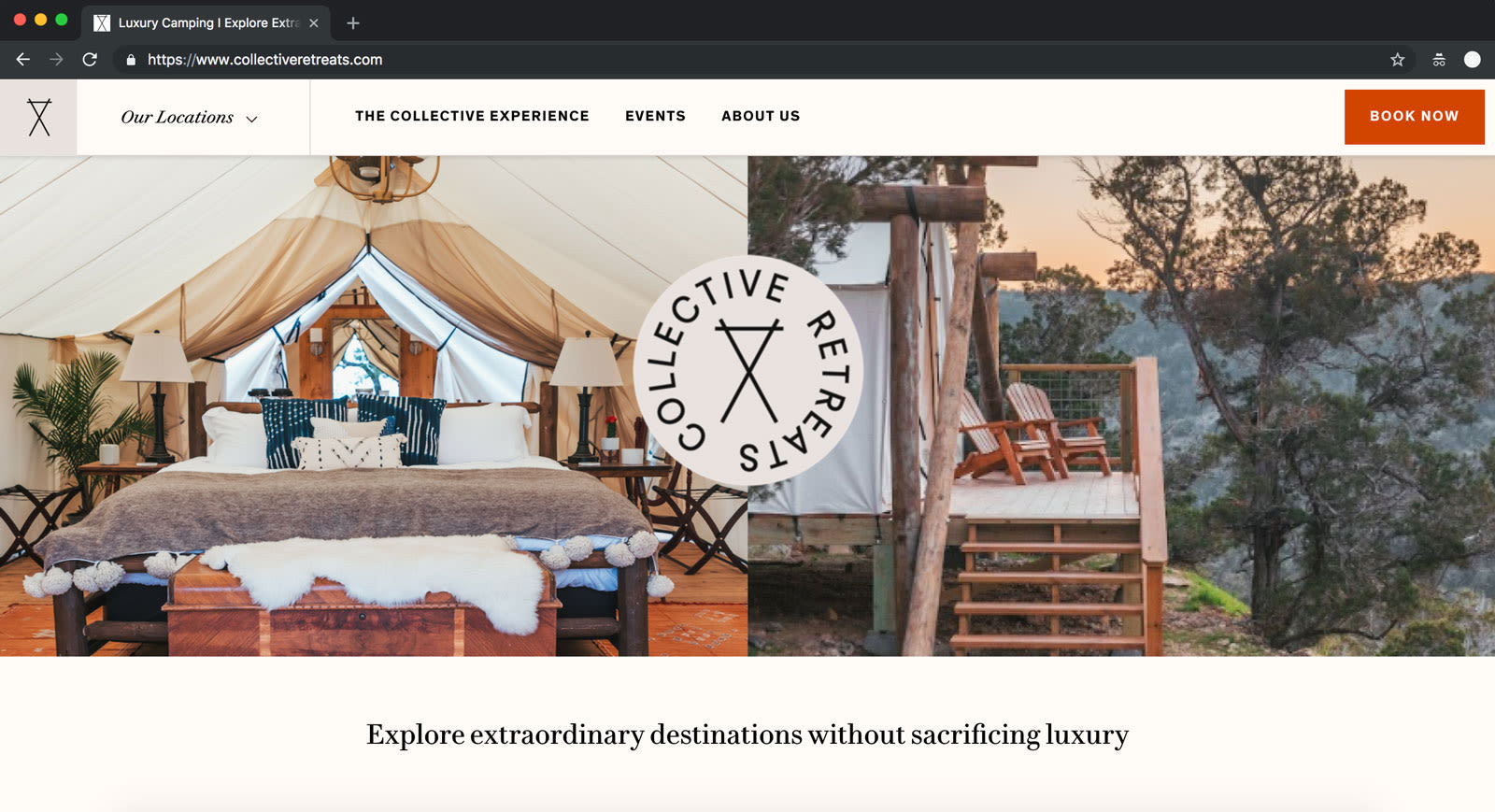
用“即便”句式化解异议。若能预判可能让访客质疑您主张的因素,不妨主动承认该问题,以此削弱反对声音。这能暗示您理解他们的担忧、不确定和疑虑,也表明您的解决方案已考虑到这些因素。句式很简单:“[主张内容],即便[可能的异议]。”一个简单的例子是:“即便您缺乏创造力,也能发挥创意。”以下是实际应用中的”即便”句式案例:
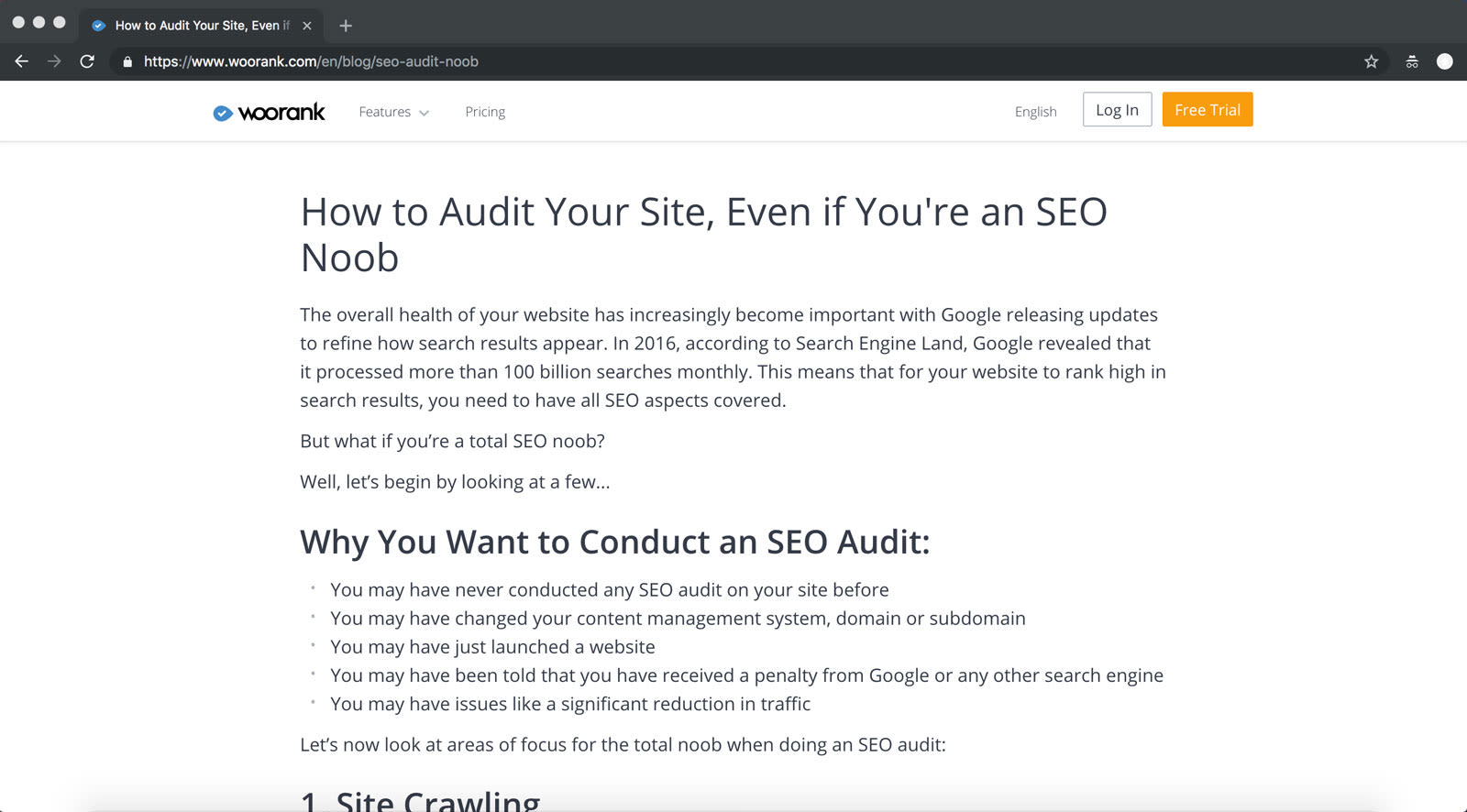
每个句子只能表达一个观点。句子本可承载大量信息,但读者的接受能力有限。读者需要依靠句号、问号甚至感叹号短暂休息,在吸收信息后再继续阅读。您越能帮助读者消化信息,他们就越有兴趣读下去。因此,务必修改每个句子,确保其只包含一个观点,而非两个或三个。苹果公司(Apple)很擅长运用这一技巧,但仍有改进空间:
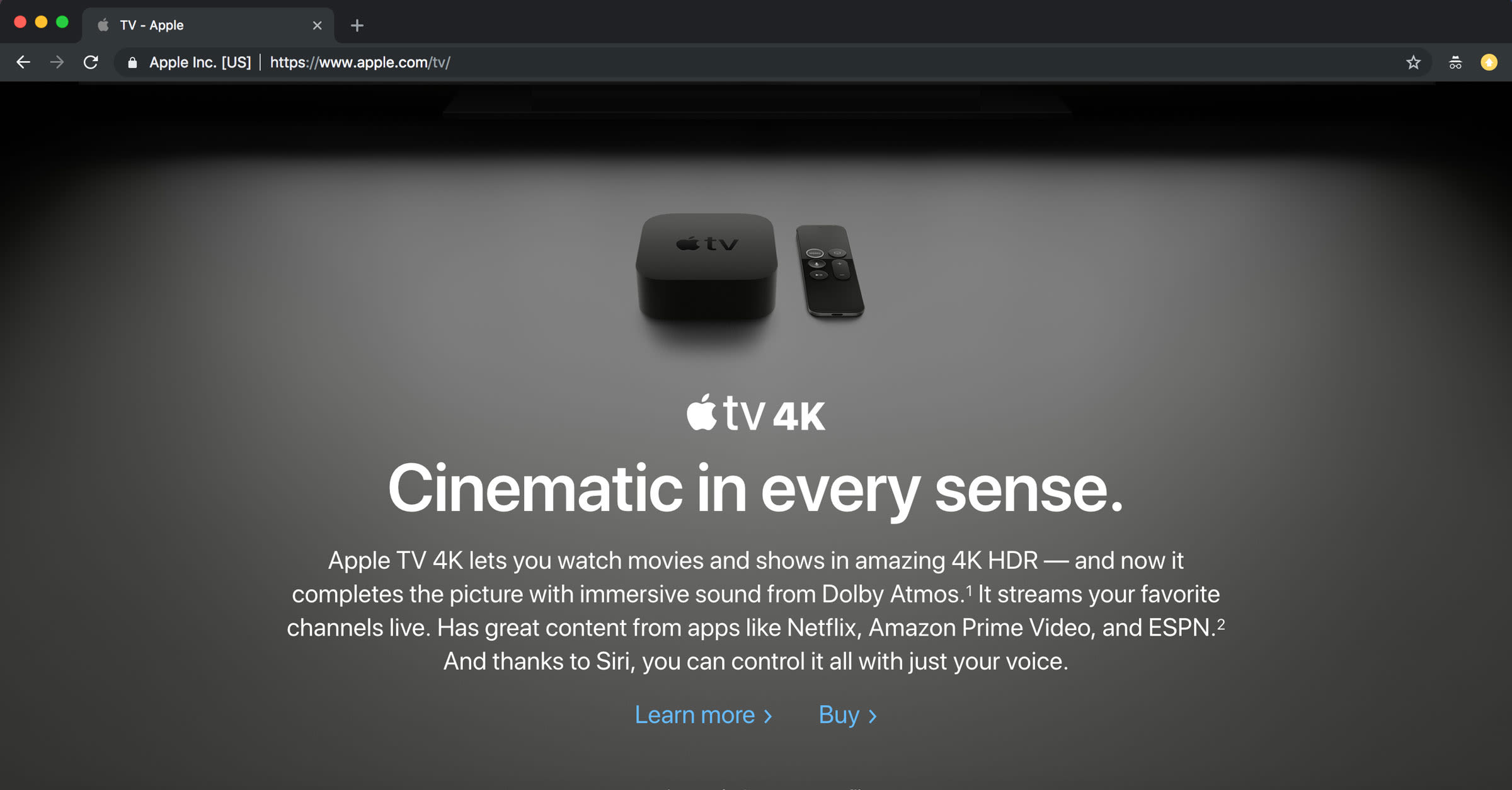
以 Apple TV 4K 的文案为例,大部分句子虽不符合传统语法意义上的完整句子,但严格遵循了“一句一观点”的原则。只有一句例外:“Apple TV 4K 支持以惊艳的 4K HDR 画质观看电影和节目,如今还配备了杜比全景声沉浸式音效,让观影体验更完整。”这句话融合了两个不同的功能点。若将其拆分为两句,普通读者会更容易理解:
Apple TV 4K 支持以惊艳的 4K HDR 画质观看电影和节目,还配备杜比全景声沉浸式音效,可直播您喜爱的电视频道,拥有网飞 (Netflix)、亚马逊 Prime 视频、ESPN 等应用提供的优质内容。而且,借助 Siri 语音助手,您只需动动嘴就能操控一切。
创建独立于首页的启动页面。 如果您的公司刚搭建好网站,可能会将首页用作启动页面,但二者本质不同。启动页面的设计目的是将潜在客户转化为实际客户,它面向有特定需求的访客,展示与该需求相关的内容,并包含针对该特定产品或服务的定制化行动号召(CTA)。与之相反,首页面向广泛受众,展示通用性强的内容,且可能没有即时行动号召。
更成熟的公司会对访客进行分流,例如,将搜索“大型企业适用产品”的访客引导至面向企业客户的专属页面,而非包含通用信息的首页。如果您的网站不止一个页面,或拥有更完善的信息架构与站点地图,建议将访客引导至最符合其需求的页面。
高效启动页面文案的基础要素
首先要说明的是:启动页面文案永无止境。它会像您的公司一样,不断发展演变——这也是它应有的状态。文案优化是一个迭代过程,永远有提升空间。市面上有数百种文案撰写公式(其中很多已收录于此处),可帮助您撰写标题、列出要点或设计行动号召。但如果不掌握基础要素,优化效果只会是小幅提升,无法实现质的突破。
高转化率启动页面的文案具备三个基础特质:
能为初创公司留下有说服力的第一印象。 从根本上讲,这要求文案直接、具体且语法正确。这种精准与专业的风格,能为访客设定预期,并提升他们对企业产品和团队后续互动的期待值。
考虑市场的成熟度。每个市场都像每家公司一样,处于独特的发展阶段。在高度成熟的市场(如一次性剃须刀),企业可采用简短文案,因为大多数访客已熟悉解决方案或产品品类的细节。这类企业的重点应放在产品差异化、品牌故事和用户群体上。若市场仍处于新兴阶段(如 2018 年的加密货币),客户可能需要更多信息——企业不仅要介绍自身解决方案,还需帮助定义整个品类。
反映客户的认知阶段。有效的启动页面文案会贴合客户的认知层次,包括:客户对企业所解决问题(如数据隐私)的理解程度、问题的重要性(如个人数据安全和/或合规风险)、市场环境变化(如 GDPR (欧盟通用数据保护条例)),以及可用的解决工具(如某款特定产品)。
简而言之,优秀的文案能体现企业对客户认知状态的把握——包括客户对市场、痛点及潜在解决方案的认知。而顶尖文案不仅能做到这一点,还能精准传达企业对客户自我认知程度的理解。以下是启动页面访客可能处于的五个认知阶段:
完全认知阶段。 访客完全了解您的解决方案,且很可能认为它是自己的首选之一,只需稍加推动就会购买。
产品认知阶段 访客正在了解您的产品,此时可能会产生免费试用、演示申请或购买行为。
解决方案认知阶段。 访客正在考虑解决自身痛点或问题的方案。
问题认知阶段。 访客感到痛点或遇到问题。
无认知阶段。 访客尚未意识到自己有需要通过您的解决方案来满足的需求。
若能对以下问题给出肯定答案,说明启动页面文案贴合客户认知:
文案语言是否通俗易懂,是否与访客的认知阶段匹配?
文案能否引导访客从当前认知状态,过渡到他们期望达到的状态?
当访客进入“产品认知阶段”或”完全认知阶段”后,是否会被引导采取行动?
启动页面文案要素的实际应用
每个启动页面都应做到:给人留下有说服力的第一印象、考虑市场成熟度,以及反映客户的认知阶段。要了解这些要素的有无会如何改变启动页面,最好的方法是参考真实案例。因此,我结合这三个基础要素,评估了九家公司的启动页面——涵盖会员管理软件、素食糖果品牌,以及法庭日期通知服务等领域。具体分析如下:
第一印象:打造准确、能建立信任且持久的介绍
公司: Kapwing
业务范围: 现代化视频、动图及图片编辑工具
启动页面问题: 文案简短但表意模糊
优化方案: 内容具体化——不过先往下看看。
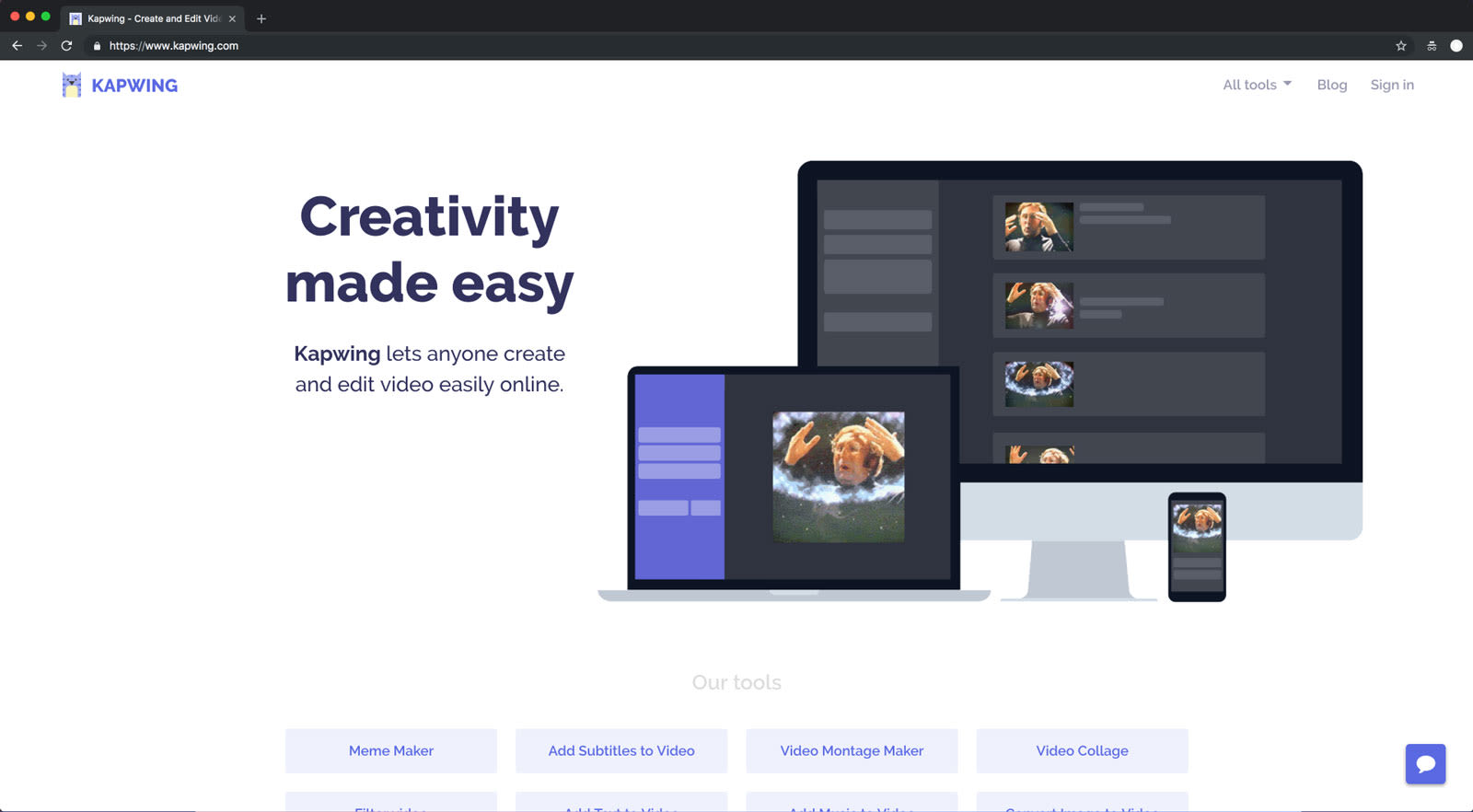
分析
标题“轻松发挥创意”引发一个疑问:使用该解决方案的用户,难道本身缺乏创意吗?这句话暗示目标受众难以发挥创意,但事实果真如此吗?
该页面陷入了一个误区:认为文案必须不惜一切代价追求简短。许多初创公司会撰写三四个词的标题,试图涵盖所有信息,这相当于将原本简洁的电梯演讲压缩成生硬的短句。在此过程中,我们会自我安慰,认为这是“简洁”——毕竟我们都知道,沟通中简洁很重要。
但您是真的做到了简洁,还是只是表意模糊?更糟的是,您是否为了追求简短而牺牲了清晰的表达?标题是页面的黄金位置,理应发挥实际作用——它本就为此而生。
回想一下您过去与客户或潜在客户的 10 次对话(如果不足 10 次,请先完成这一步)。对话中,他们在哪个时刻表现出浓厚兴趣?那个瞬间的内容,就是撰写优质标题的素材——至少值得一试。这才应是您启动页面顶部的内容。
撰写标题时,不要将客户丰富、细致的反馈压缩到最短。相反,要认真倾听,记录他们的表述,然后直接呈现在页面上。后续可稍作调整,使其符合品牌调性且更具说服力,但无需过度精简。
过度精简的风险在于表意模糊。Kapwing 的工具功能广泛,可制作表情包、为视频添加字幕、制作蒙太奇视频等。如果您是营销团队成员,很可能会倾向于分析 Kapwing 的所有功能,用维恩图找出它们的交集——即所有功能、使用案例和输出结果的共同特质。“轻松发挥创意”这个标题,很可能就是这样产生的。
这就是平庸标题出现的原因——即便对最懂文案的初创公司而言,这种情况也屡见不鲜。许多创始人在口头电梯演讲或其他文案中,能写出更有效的标题。Kapwing 也不例外:更好的标题选项,其实藏在页面下方的文案中:
在 iMovie 里需要几小时完成的任务,在 Kapwing 中只需几分钟。
无需安装,无需密码,无需技术教程。支持所有操作系统,可在手机和电脑上使用。
或者
玩转表情包创作。
在 iMovie 里需要几小时完成的创意工作,在 Kapwing 中只需几分钟。
这两种表述都能具体且有吸引力地体现出在 Kapwing 中发挥创意的便捷性,同时也可作为引导用户了解其其他工具套件的入口。这些信息本应作为标题置于页面顶部。很多企业都会出现“标题文案被隐藏”的问题:并非无法写出好标题,而是很可能将其埋没了。
公司: WebGazer
业务范围: 免费的网站监控服务
启动页面问题: 文案以“我们”为中心
优化方案: “以您为中心法则”
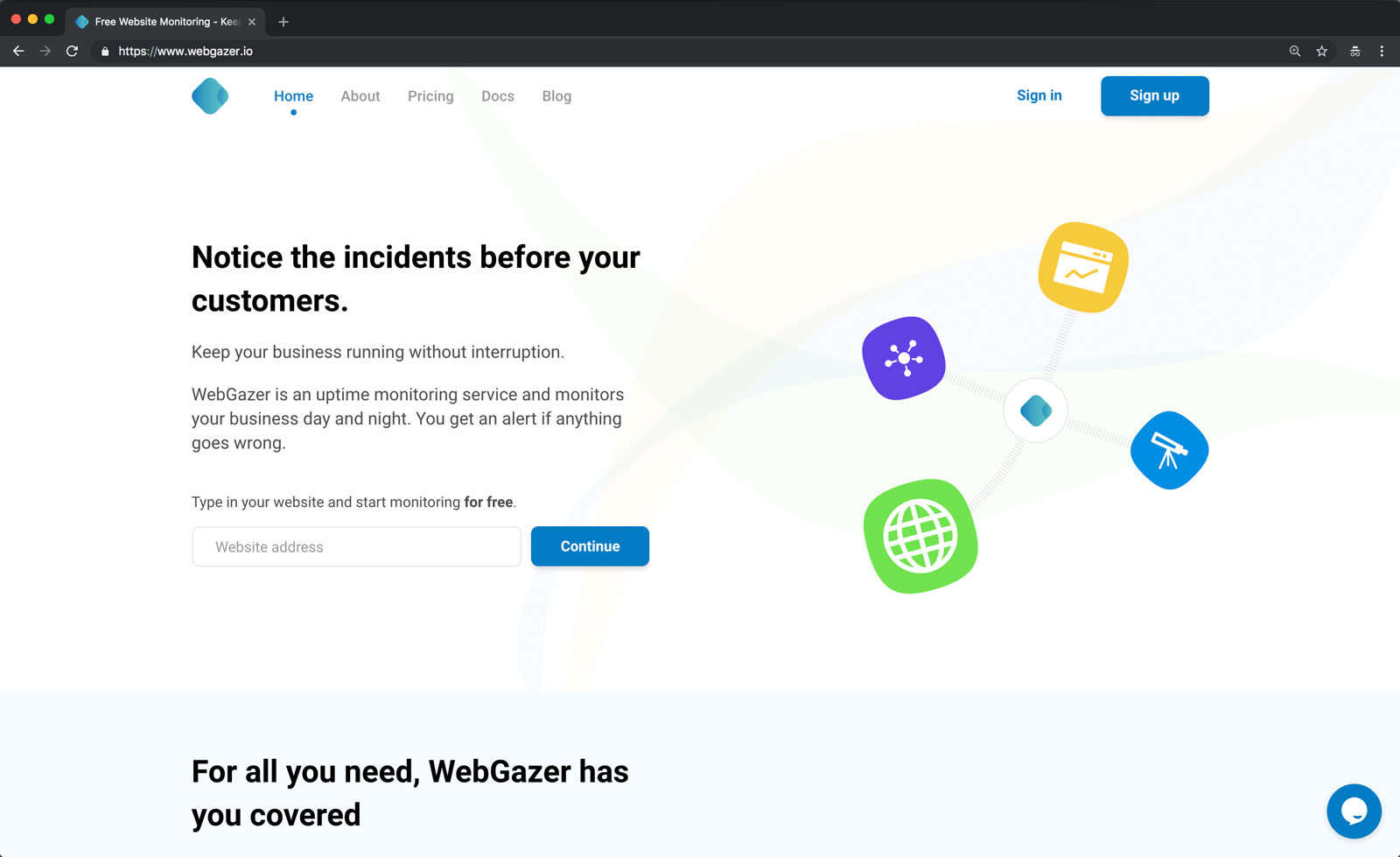
分析
只要访客进入页面时了解 WebGazer 是什么、能做什么,这个标题就是有效的。如果这是一个再营销页面,现有文案或许足够。
但如果不是呢?先看这句话:“我们帮您维持业务正常运转。”句首的“我们”就是问题所在。以“我们”为中心的文案几乎必然会出现问题,因为它站在企业视角而非客户视角。这就好比有人自我介绍时,全程只谈论自己。要修正这类文案,需将每个句子改写为以“您”或动词开头。以下是 WebGazer 可对其启动页面上三个句子进行的修改:
|
以自己为核心的文案
|
以对方为核心的文案
|
|---|---|
| 我们全天候监测您的网站,今日成果实时可见。 | 您可高枕无忧。因为我们会不眠不休为您值守。 |
| WebGazer 持续检测网站运行状态,异常即时告警。 | 确保您的在线业务零中断。WebGazer 日夜监控。异常发生即刻预警。 |
| 我们守护您的业务永续运营。 | 网站突发宕机如何及时知晓? |
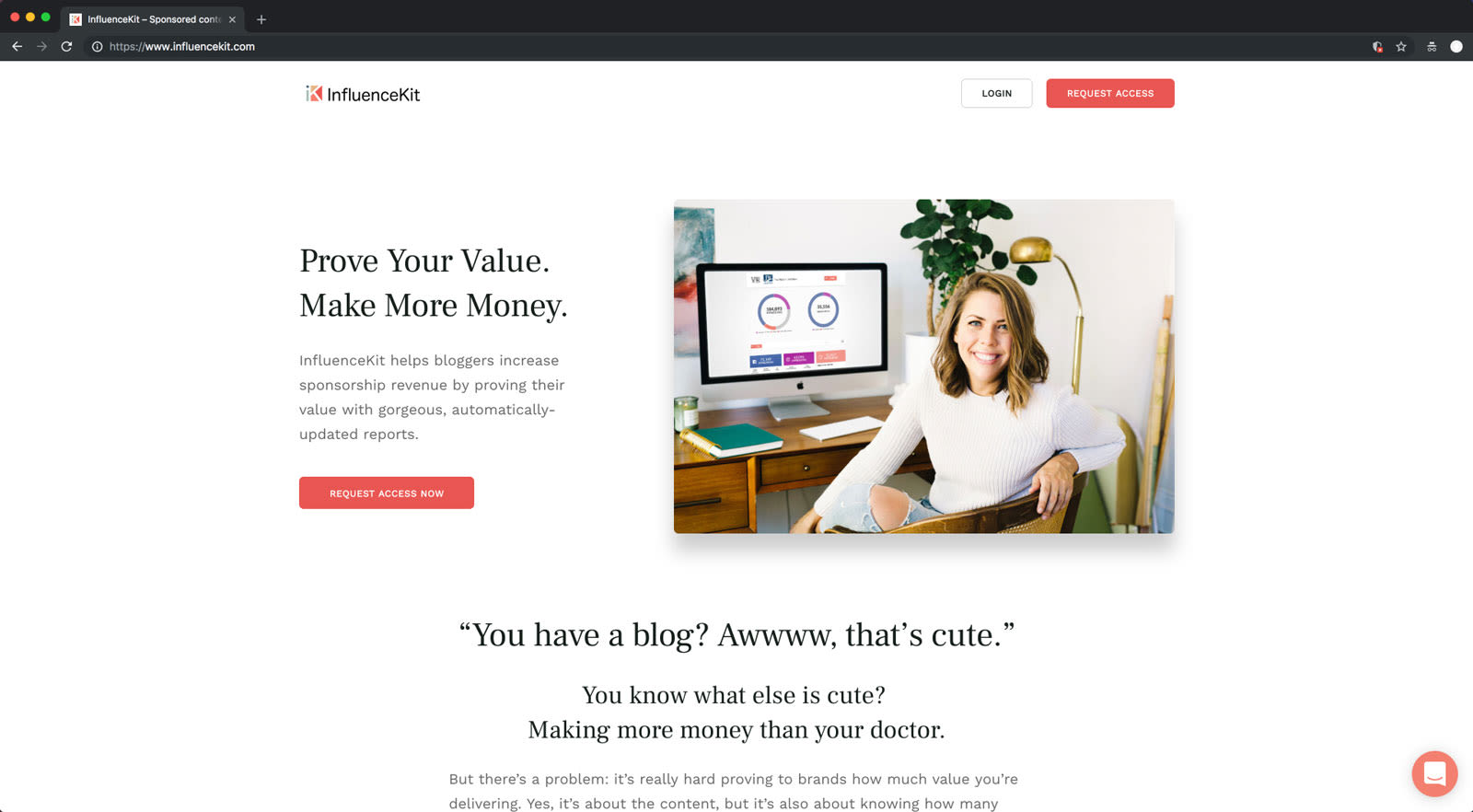
分析
初看这个启动页面的文案,优点很多。文案读起来流畅自然,且遵循了多项优秀文案撰写原则,包括:
- 移除干扰性行动号召(如无全局导航栏)
- 以极具吸引力的利益点开篇,抓住访客注意力(让他们明白“为什么要关注”)
- 通过产品专属优势展开阐述(说明“产品如何实现这一利益”)
- 优化文案格式以提升可读性(“您有博客吗?”下方的三段正文采用窄栏排版,而非横跨页面的宽栏,避免阅读时视觉疲劳。)
- 语气适度,不喧宾夺主(除少数例外,仅在小标题中体现品牌语气,减少对读者信息接收过程的“干扰”)
- 尽可能以“您”开头
- 句子简短易懂
该启动页面文案虽有诸多亮点,却未能充分利用这些优势。在向潜在客户充分论证产品价值后,文案居然没有以行动号召 (CTA) 收尾。AIDA 框架(即注意力 - 兴趣 - 欲望 - 行动框架,Attention, Interest, Desire, Action)可帮助梳理文案逻辑,清晰展现这一缺失的环节。
AIDA:注意力、兴趣、欲望、行动
吸引注意力。 在此案例中,InfluenceKit 首先通过清晰阐述博主普遍面临的痛点——证明内容价值,来建立信任与共鸣。文案内容如下:
...向品牌证明您所带来的价值,其实难度很大。
激发兴趣。 在此环节,文案通过详细阐述问题,让读者产生共鸣,更深刻地意识到自身面临的挑战。这种共识能进一步激发他们的兴趣。文案继续写道:
没错,文案内容很重要,但了解您所创造的产品影响了多少人,同样重要。
我们都想知道自己的钱花在了哪里(该死的塔吉特百货)。品牌也不例外,它们想清楚自己的投资能获得什么回报。曝光量报告是互联网营销的行业标准,但迄今为止,博主群体的相关数据一直处于“信息黑洞”状态。
您的博客不只是好看的图片集合,它还蕴含着真正的影响力。您清楚这一点,我们也清楚——让我们共同证明这一点。
将潜在兴趣转化为明确欲望让他们产生将解决方案融入生活的想法。文案需简洁清晰地呈现所提供的解决方案,内容如下:
借助强大且动态的报告,展现您的真实影响力。
引导访客行动。 页面虽包含行动号召,但位置不当。它被埋没在一系列内容之下:集成工具列表、InfluenceKit 的四步设置流程、介绍两类博主的信息图,以及“团队介绍”板块。直到最后,出现的才是行动号召:
准备好证明自身价值、赚取更多收入了吗?立即申请使用(后续将提供专属开通方式)。
在“如何使用 InfluenceKit”四步介绍板块的末尾,文案已充分论证了行动的必要性。在此处,我认为——也建议——应增设一个收尾板块,包含以下内容:
重申价值主张
用项目符号简要列出解决方案带来的成果
一张有说服力的截图
一个行动号召
一条来自博主或赞助商的推荐语
一个关于平均成果的数据点
或许 InfluenceKit 是一家新公司,因此尚未有数据能证明其成效。但“新”也有独特优势。我建议创始人分享自己通过 InfluenceKit 获得的经历与成果——并始终坦诚表明自己的创始人身份——以此证明其他人也能从中受益。打造持久第一印象的关键之一,不仅是为潜在客户创造产生共鸣的机会,更是为他们创造行动和互动的契机。唯有如此,才能将“印象”转化为“关系”。
市场成熟度:让文案贴合市场现状
公司: Nomba
业务范围: 数字化优先的素食糖果品牌
启动页面问题: “试用”或”演示”模式
优化方案: 在首次客户互动中融入市场定位。
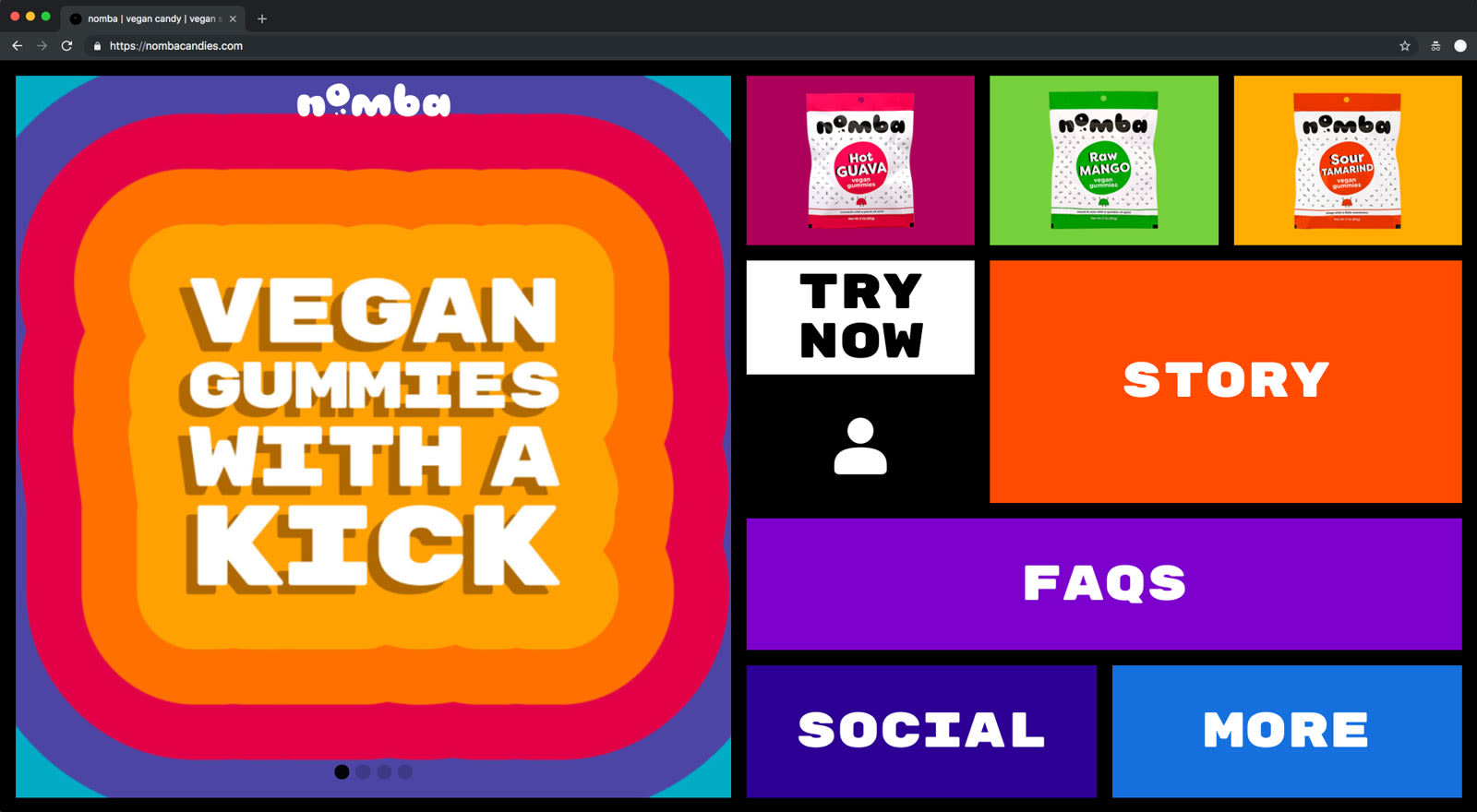
分析
启动页面顶部以及整个网站中“立即试用”的表述都令人困惑。但更令人费解的是该产品的试用概念。
对主流消费者而言,购买糖果时试用并不常见。提供试用,反而会让本就熟悉糖果购买流程、只是想购买素食糖果的成熟消费者产生疑虑。访客会开始产生各种小疑问,进而引发更大的担忧:
糖果领域的“试用”到底是什么意思?
试用是指将食品寄给我吗?试用后需要寄回去吗?
我能拿到样品还是正装产品?
等等,这会不会是需要主动取消的订阅服务?
我到底想不想要辣味糖果?
就这样,他们会直接离开。
原本想尝试这款辣味素食糖果的访客,会点击返回按钮,甚至会为“成功脱身”而感到庆幸。
Nomba 的文案面临一个新问题:需要解决潜在客户不理解食品类产品“试用模式”的困惑。具体可通过以下方式优化:
首先,要明确必须解决这个问题。 但无需详细阐述,毕竟这只是一款 5 美元的零食,或是 15 美元的甜食消费。
其次,思考:解决这个问题最简单、最快捷的方式是什么? 答案往往在于“命名”。有时,重新命名能更好地解释产品功能,重新标注能让价格层级更清晰。在这种情况下,将试用改称为样品包或体验装,更容易被理解。
如此一来,“立即试用”这一行动号召 (CTA) 可改为以下任意一种:
获取体验装
体验 Nomba
试用 Nomba
Nomba 应在所有产品页面和结账流程中统一使用新表述,避免进一步混淆。任何通过试用或演示吸引客户的初创公司,撰写文案时都需兼顾客户和现有市场情况。
公司: eve
业务范围: 活动管理软件
启动页面问题: 过度强调解决方案,忽视问题本身
优化方案: PAS 框架

分析
活动管理软件的潜在客户可能已意识到需要解决方案,但即便如此,该启动页面仍需增加对活动策划痛点的科普内容。毕竟,活动执行过程中存在诸多复杂问题:多方利益相关者、不断变化的时间线、众多供应商以及频繁调整的议程等,问题不胜枚举。
该启动页面开篇表现尚可,以利益导向的标题和产品层面的价值主张切入:
更便捷的活动策划方式。
eve 支持团队全员在同一平台完成活动的策划、执行与复盘,无需改变现有工作流程。
软件即服务 (SaaS) 公司通常会以价值主张作为文案开头,这本身无可厚非,但很多营销人员会困惑于后续内容该如何展开。以 eve 这类产品为例:潜在客户和大众往往会低估活动策划的难度,直到活动前两天陷入慌乱才意识到问题。因此,建议在阐述价值主张后,立即聚焦并详细说明 eve 所解决的问题。
或许有人认为,页面顶部标题下方的第一个小标题已经实现了这一目标:
终结活动压力的便捷软件
但该小标题以解决方案(“便捷软件”)开头,而实际上应完全聚焦于痛点(“活动策划压力”)。PAS 框架(即问题、焦虑、解决方案框架,Problem-Agitation-Solution)能帮助梳理文案结构,让其聚焦于选择 eve 这类“痛点解决型”解决方案的核心驱动力——痛点本身。
我的核心建议是:文案不应回避痛点。因此,可将现有文案:
“策划并协调一场现场活动能有多难?”
具体如下:
“策划并协调一场有 20 位全球主讲嘉宾、500 名参会者的两天会议,能有多难?”
第一种方案稳妥,第二种方案更易留下深刻印象。
我们常常倾向于将所有内容简化为最稳妥的版本,却因此牺牲了能吸引并转化潜在客户的具体、生动文案。这并非我们的过错——身边所有人都在写稳妥的文案,若我们选择大胆创新,就意味着要承担风险。
不妨先做个测试看看,但我的建议是大胆去尝试。如今,企业若想崭露头角,1) 要么得有雄厚的营销预算来弥补保守宣传的局限,2) 要么得有让人印象深刻的方式与用户建立联结,二者缺一不可。要努力对潜在客户做到极致具体——具体到可能让您感到不自在的程度也在所不惜。这恰恰说明,您真正摸清了所在行业从业者的真切痛点。
公司: Scribendi
业务范围: 英文文档编辑与校对服务
启动页面问题: 成果规模与效果不清晰
优化方案: 用可视化方式呈现数据,而非单纯罗列。
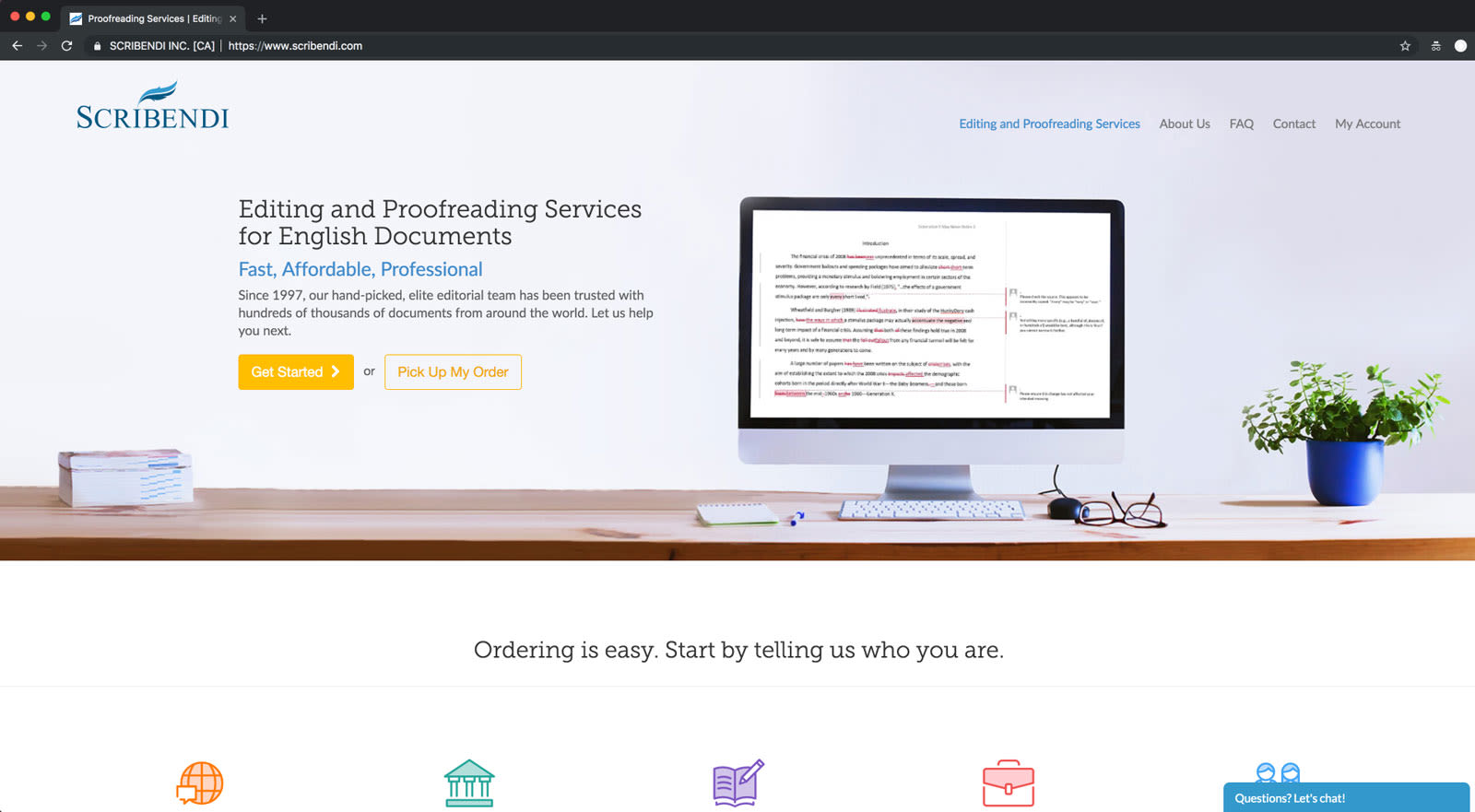
分析
总体而言,该页面的文案质量较高,但文案并非只有文字形式,数据也是文案的一部分。
在页面下方,有一些令人印象深刻的数据,体现了其服务客户数量、校对文字量以及编辑工作活跃度:
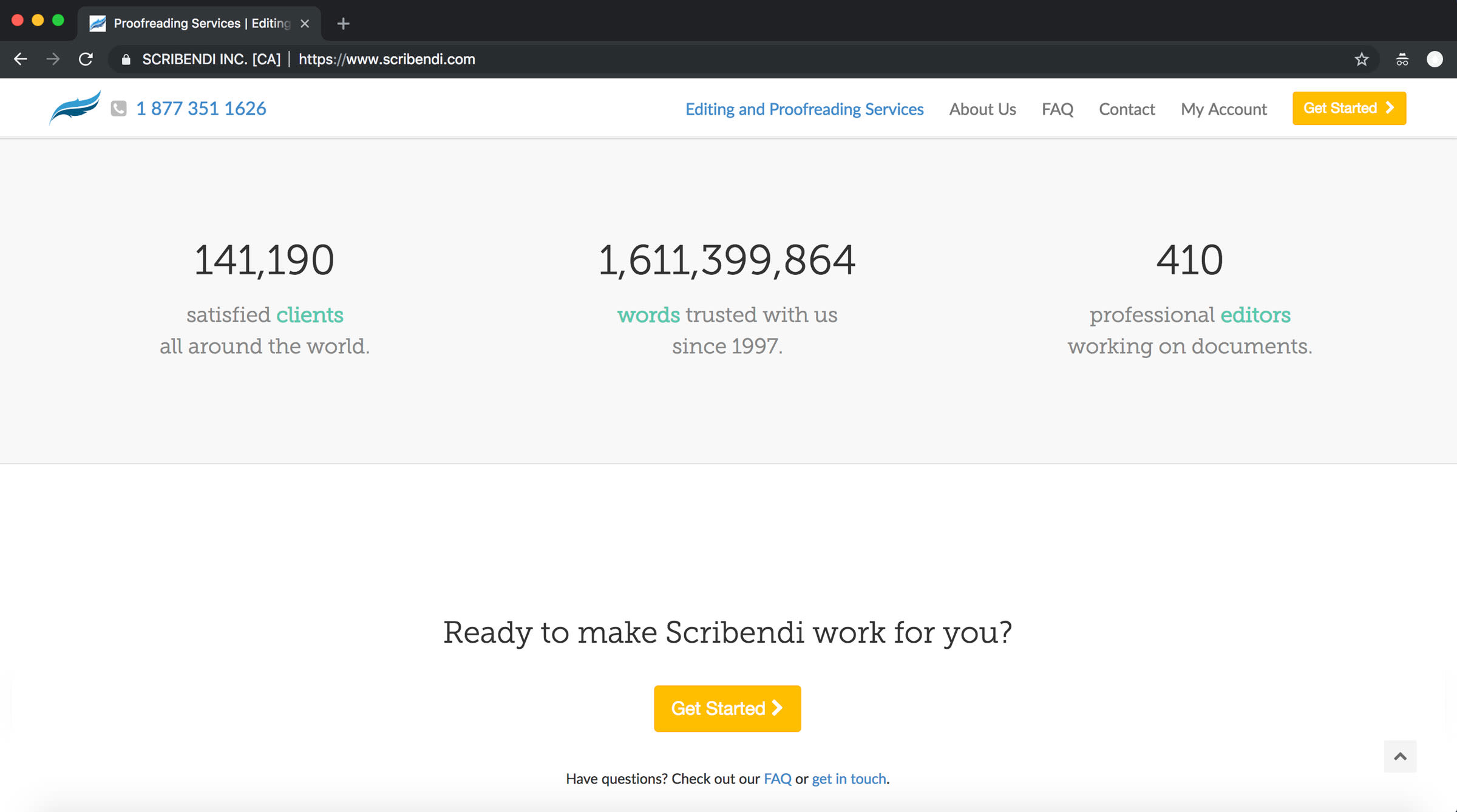
这些数据令人印象深刻,但也存在理解障碍。
首先,我相信不止我一人会将 16 亿 (1.6B) 误看成 160 万 (1.6M)。即便数字准确,这到底意味着多少份文档?是 1 万多份学术领域的英语作为第二语言 (ESL) 论文,还是 10 万份本科生论文?
我建议保留原始数据,但添加可视化元素,直观展现这一成果的规模。以下是一个通过简单计算实现可视化呈现的思路:16 亿个单词,实际相当于 640 万页文档,总厚度达 318,939 毫米,即 1046 英尺。这是一个惊人的数字——比加拿大国家电视塔高度的一半还多(也可替换为目标受众熟悉的本地地标)。
帮助潜在客户直观感受你所做的工作——不妨大胆借鉴其他领域的案例来佐证你所在领域的价值。数字固然有用,但有句话我深以为然:能用画面说话的人,才能赢得认可。
客户认知:梳理客户的认知状态
公司: Join It
业务范围: 会员管理软件
启动页面问题: 默认访客处于“解决方案认知阶段”
优化方案: 转变为“解决方案认知阶段”潜在客户的思维模式。
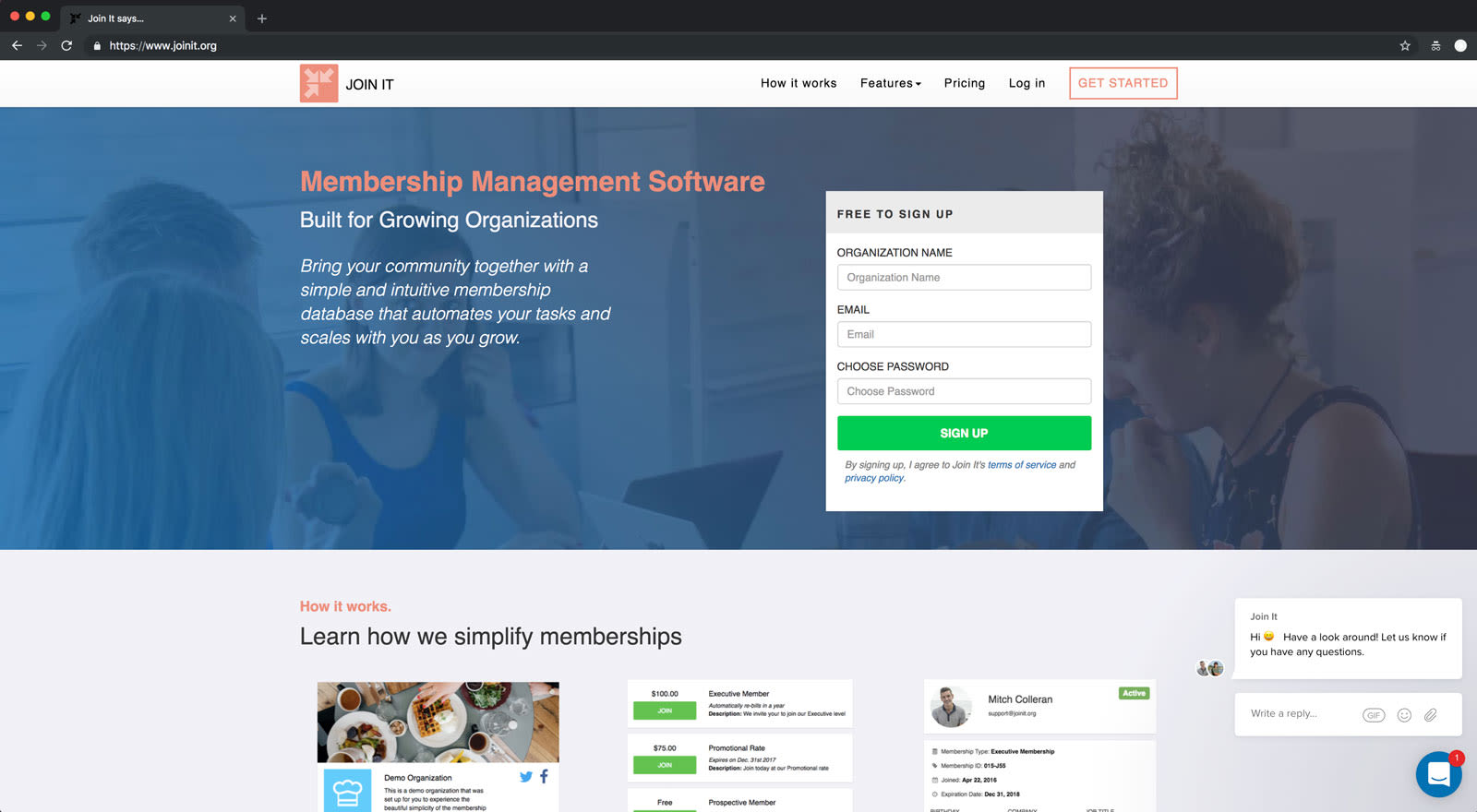
分析
“会员管理软件”这个标题,虽然有利于搜索引擎优化 (SEO),但过于专业,作为页面顶部三个加粗的核心词汇,显得突兀。
像 “会员管理软件” 这样的标题要想奏效,其潜在客户需要具备一定认知水平且处于 “解决方案认知阶段”。这就涉及到客户认知的五个阶段,具体如下:
完全认知阶段。 访客完全了解您的解决方案,且很可能认为它是自己的首选之一,只需稍加推动就会购买。
产品认知阶段 访客正在了解您的产品,此时可能会产生免费试用、演示申请或购买行为。
解决方案认知阶段。 访客正在考虑解决自身痛点或问题的方案。
问题认知阶段。 访客感到痛点或遇到问题。
无认知阶段。 访客尚未意识到自己有需要通过您的解决方案来满足的需求。
若潜在客户处于“解决方案认知阶段”,他们会主动寻找“会员管理软件”,也能准确理解这个术语。但 Join It 仅针对该阶段访客,会错失一部分潜在客户。若能调整标题和文案,使其契合潜在客户的问题或思维模式,Join It 就能扩大受众范围,吸引更多潜在客户。具体修改示例如下:
|
解决方案认知型潜在客户的心理预期
|
对应标题文案
|
|---|---|
| 据说会员管理软件能帮我自动化处理棘手的社群事务。 | 现在您可以通过简易会员管理软件自动化社群运营 |
| 我需要能实现这一长串功能的会员管理系统。 |
快速增长型企业所需的会员管理系统应具备:
|
| 正考虑更换 X 系统,因其存在 Y 缺陷让我不满。 | 用可扩展的智能会员管理系统彻底解决 Y 问题 |
| 在组织内部署会员管理系统是否意味着海量工作?我该恐慌吗? |
会员管理软件 若能将社群运营自动化,业务增长将提升多少效率? |
将语言风格从“解决方案导向”转变为“潜在客户思维模式”,看似是退回到针对“问题认知阶段”访客的沟通方式。处于这个阶段的访客,似乎比“产品认知阶段”访客离成交更远。
但考虑到会员管理软件市场已趋于成熟,若 Join It 能让标题更通俗易懂,吸引更多访客,就能扩大其营销漏斗的顶端受众范围。同时,这依然能让“解决方案认知阶段”和“产品认知阶段”的访客产生共鸣。
公司: Parkpnp
业务范围: 闲置或未充分利用停车位的交易市场
启动页面问题: 对访客存在认知偏差
优化方案: “单一法则”
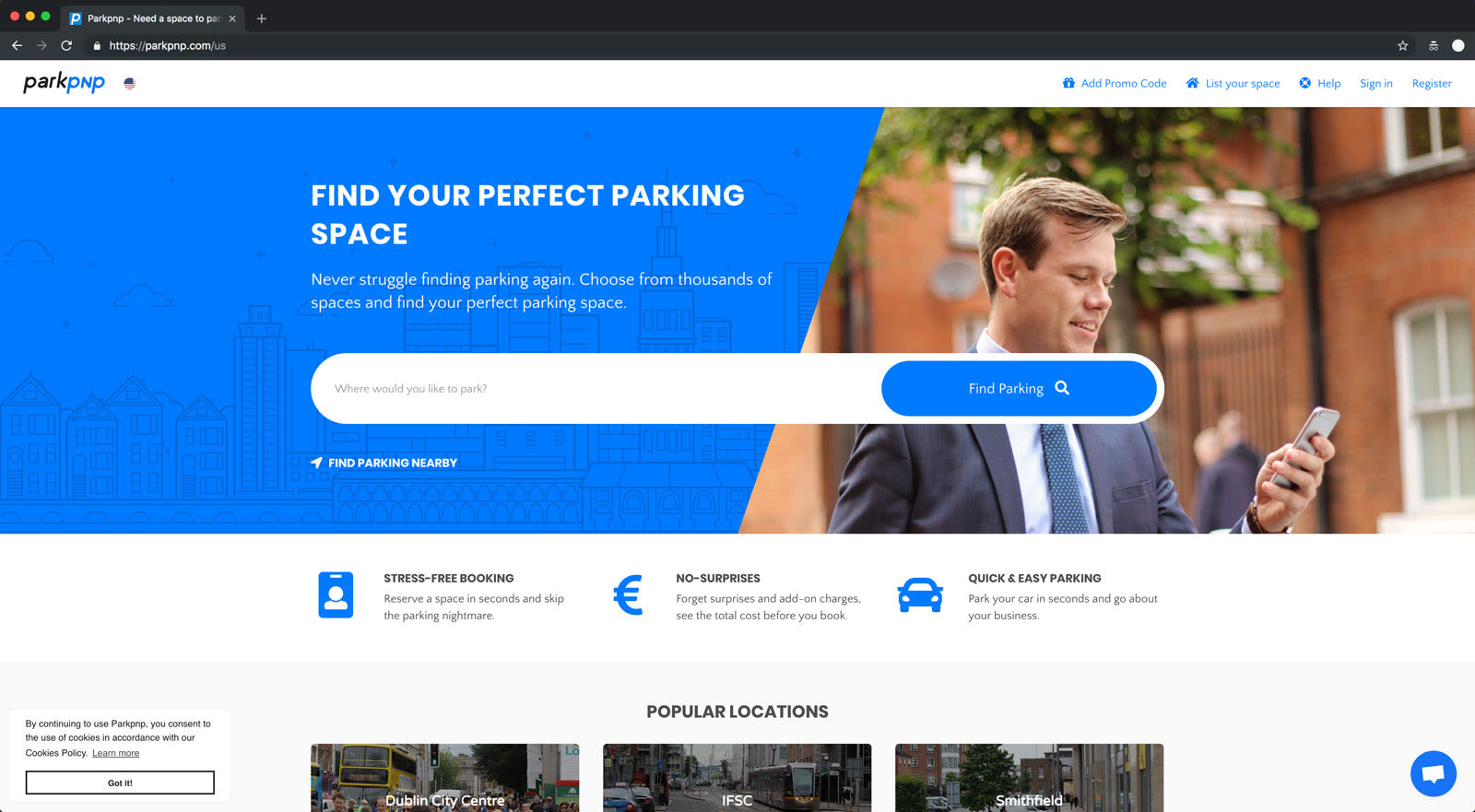
了解客户认知阶段的关键,在于把握他们访问页面的背景和动机——这些都应体现在文案和页面体验中。能否做到这一点,可能决定访客会将您视为“生活中的救星”,还是“麻烦制造者”。
对 Parkpnp 而言,背景和动机是其解决方案的关键因素。这款用于寻找停车位的应用,可能会在用户预判停车难(如大型体育赛事期间)时提前使用,但更可能在用户急需停车、痛点最强烈且容易分心的当下使用。
简而言之,大多数人会在开车时,于繁忙区域寻找停车位的过程中使用 Parkpnp。此时他们的痛点很强烈,解决痛点的意愿也很迫切。
他们需要一个“救星”。
在这种情况下,您的网站是“救星”还是“麻烦制造者”?
当前页面顶部的文案和用户体验,反而让这款解决方案更像“麻烦制造者”。首先,无论是移动端还是桌面端,页面都要求用户输入地址,增加了用户操作负担。更明显的问题是,文案对“完美停车”的定义做了想当然的假设。实际上,完美停车可能意味着:
离我现在的位置近。
离我的最终目的地最近。
现在就能使用。
随时可用/长期可用。
允许夜间停车。
是周边最便宜的选项。
免费。
支持信用卡支付。
有安保巡逻。
有遮挡。
有超宽车位。
无需侧方停车。
有无障碍通道。
在本页的标题中,“完美”一词试图涵盖所有的愿望。但对用户 A 来说完美,对用户 B 来说未必完美。这就是商家需要做出决定的地方:主要潜在用户在使用解决方案时对完美停车的最高定义是什么?
这个问题触及了文案撰写中的核心原则——“单一法则”。该法则要求撰写启动页面前,必须先明确以下四个要点:
目标访客 (One Reader)
核心观点(One Big Idea,或具有颠覆性的观点)
核心承诺(One Promise,或可衡量的理想成果)
核心产品/服务(One Offer)
在“单一法则”的所有要点中,“目标访客”最为重要。若不先明确目标访客,就无法写出有效的页面文案。一旦充分了解目标访客,您就能清楚他们的痛点、期望的利益、最可能响应的产品/服务,以及能打动他们的社会认同形式等。您无需对目标访客做过于细致的刻画,但需足够了解他们,以便在面对上述完美停车的诸多定义时,能判断出他们最可能选择哪一个。
他们的选择,就是您应在文案中采用的定义。
以 Parkpnp 为例,若目标访客将完美停车定义为离我现在的位置近的停车,那么标题和行动号召 (CTA) 都需相应调整。具体修改方式如下:
|
发件人...
|
收件人...
|
|
|---|---|---|
|
大标题
|
找到您的理想停车位 | 立即查找附近可用停车位 |
|
主号召性用语
|
区域:您想在何处停车? 按钮:查找停车位 |
按钮:立即查找附近停车位 |
|
次号召性用语
|
按钮:查找附近停车位 | 链接:查找未来日期、活动或长期需求的停车位 |
这样,您的网站就能从“反面角色”转变为“正面角色”。
显然,若您的“目标访客”将“完美停车”定义为“离工作地点近,且费用不到我薪水的一半”,或是“为在外上大学的女儿找安全的停车位”——也就是说,他们在为未来的停车需求做规划——那么标题和用户体验自然也要相应调整。您不必做到如此细致,但如果标题能达到这种具体程度,转化访客的可能性会更高。反之,若标题试图覆盖大范围受众,结果可能不尽如人意。要知道:试图取悦所有人的角色往往平淡无奇,对企业而言也更难产生实际效果。
公司: eCourtDate
业务范围: 及时的数字化法庭日期提醒服务
启动页面问题: 用户定位不明确
优化方案: “适用对象”说明
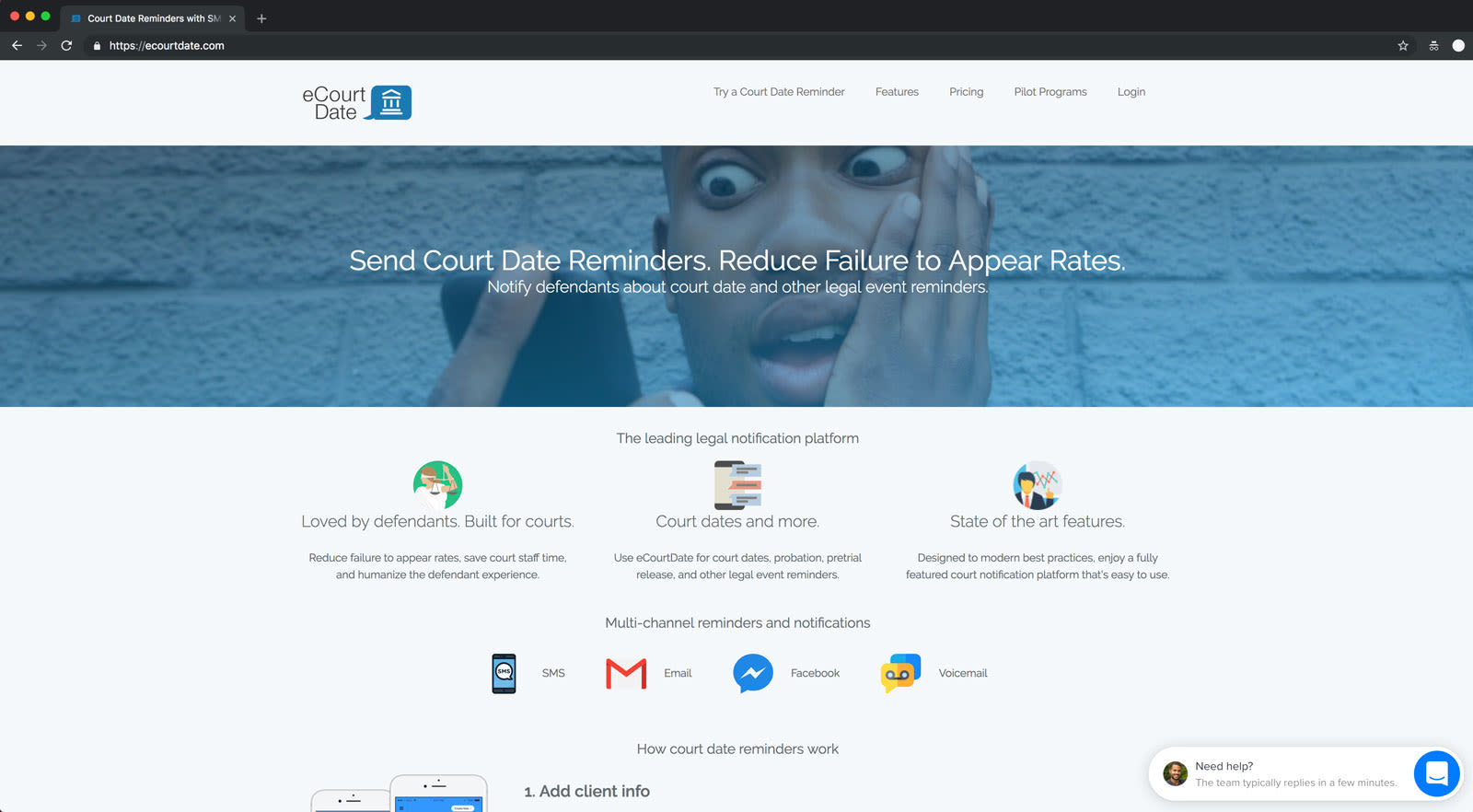
关于 eCourtDate 启动页面,首要问题是:访客进入页面后,能否明确该服务是否适合自己?
优化文案最简单直接的方法之一,就是添加“适用对象”说明。该说明可置于网站任意位置,但最好放在启动页面顶部附近——对于 eCourtDate 这类用户定位模糊的服务,这点尤为重要。其潜在用户可能包括律师、警察、法院工作人员、被告、原告,甚至可能是陪审员。
无论目标用户是谁,都应在页面中以“适用对象”说明的形式明确标注,例如:
适用于处理刑事案件和酒驾案件的律师
如果适用人群不止一类,也可明确列出:
适用于刑事律师、交通警察和法院行政人员
在此基础上,页面顶部的标题和副标题会更具背景感,也能更清晰地传达服务内容。若想进一步优化文案,可额外采取两个步骤:说明其重要性,并提供已实现效果的证明。这一原则被称为“那又怎样”/“证明给我看”。
以下是结合这两个要素后的文案示例:
适用于忙碌的法院行政人员
发送开庭日期提醒。
降低缺席率。
向被告发送法庭日期及其他法律相关事件的提醒。每月可为法院工作人员节省多达 20 小时的时间,将法庭缺席率降低 33%,同时优化被告的体验。
可以补充一些案例佐证,比如之前对产品不满、如今满意度高的法院工作人员或法官的评价。这些优化措施,本质上都是从一开始就明确服务的目标用户。
启动页面文案优化第一步
启动页面文案是一种未被充分利用的强大工具。若运用得当,它能塑造品牌、建立信任并促进产品销售——无论访客身处何地,都能在他们方便的时间实现转化。但这并非自动实现的,启动页面文案必须做到三点:留下有说服力的第一印象、考虑市场成熟度、反映客户的认知阶段。它必须在潜在客户当前的认知状态基础上,引导他们达到自身及企业期望的目标状态。一旦做到这些,初步的互动会转化为积极反馈,积极反馈进而转化为合作——整个过程几乎无需人工干预。
无需过度纠结从何处着手,关键是立即行动。启动页面文案可以——也必须——持续优化。如果您的时间和资源有限,可参考快速优化技巧进行调整,以小投入获得显著成效;如果时间充裕,可全面改写文案,围绕“打造持久印象、贴合市场成熟度、匹配客户认知”三个核心方向展开。
